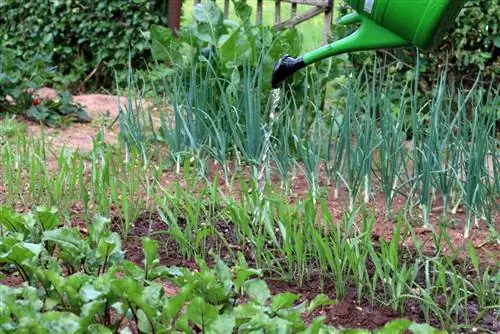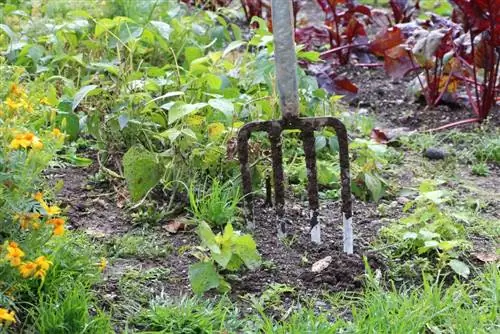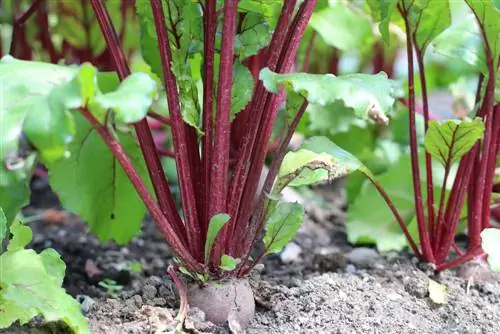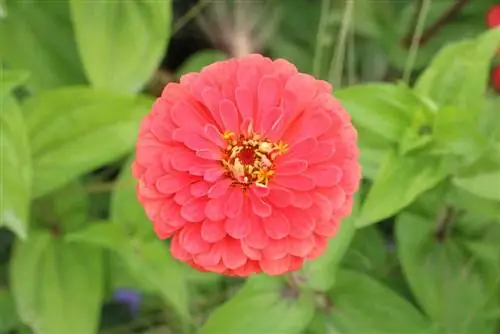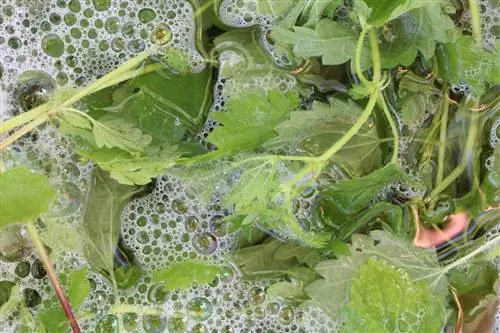- Author admin [email protected].
- Public 2023-12-17 03:39.
- Last modified 2025-06-01 06:48.
More than three quarters of all traditional cultivated varieties have been displaced by new industrial varieties in less than 100 years. Some vegetables and fruits are only available as hybrid seeds that can no longer be propagated from seed. Such varieties only produce good yields under optimal conditions. It's completely different with the old varieties. Your advantages lie not only in the variety of taste.
Germany
Committed breeders, gardeners and vegetable growers are reviving historic vegetables and forgotten types of fruit from Germany. Old varieties are often better suited to the requirements of home and self-sufficient gardens as they prove to be robust and deliver good yields even under suboptimal conditions.
Trout salads (Lactuca sativa)
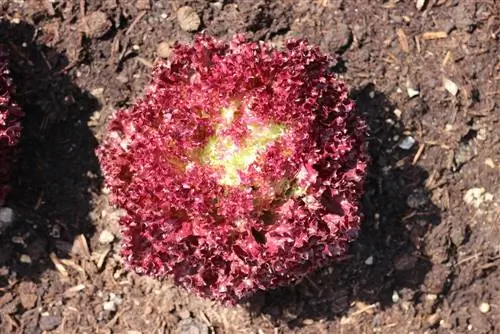
This category includes traditional varieties whose leaves are brown-red and mottled like trout and taste particularly aromatic. They were created from crossing romaine lettuce (“trout breeches”) and lettuce (“golden trout”) and were grown in Franconia in the 19th century. Since the spots at first glance resemble dead spots, the old varieties were quickly pushed out of the market. Trout salads develop half-open heads whose outer leaves are flat and covered with fine bubbles. The inner leaves are dotted salmon pink. The extended harvest phase is particularly interesting for hobby gardeners. Trout salads are among the excellent types of salad that are an adornment in every dish because of their color. These varieties have almost been forgotten or can no longer be found on the market:
- 'Trout salad, large blood-red': large leaves, speckled with blood-red
- 'Colorful Trout': medium-sized heads, leaves speckled green and pink
- 'Blood trout salad with white seeds': delicate little heads, lost variety
Tip:
According to old traditions, the salads go perfectly with lobster mayonnaise.
Radish (Raphanus sativus var. sativus)
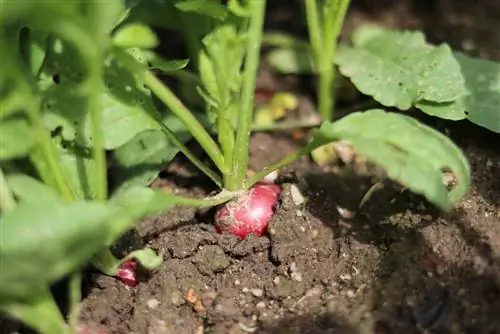
References to this vegetable date back to the 16th century. It was probably bred in the Mediterranean region on the species Raphanus landra and Raphanus maritima. The tubers are particularly popular because of their short ripening time. The root vegetables can be harvested after just 20 to 30 days. New cultivars develop red and rounded tubers, while historical vegetables are characterized by a wide range of shapes and colors. The spectrum ranges from rounded to elongated shapes and from red to violet to yellow and white shades:
- ‘Papageno’ (half-red-half-white radishes)
- ‘Icicles’ (white oblong radishes)
- 'Yellow Radish' (old country variety)
- ‘Giant butter’ (the size of a pompom, bright red, tender and not furry)
Plum ‘Anna Späth’
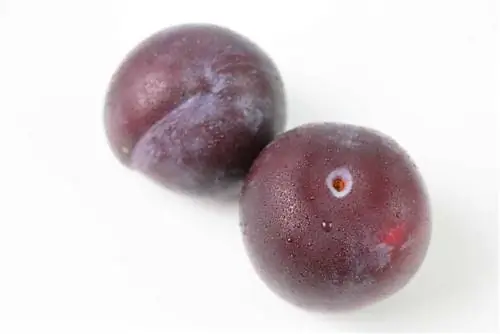
Many forgotten fruits like this plum have a mysterious history. This variety probably came to Germany as a seedling from Hungary in the 19th century, where it was brought onto the market by Anna Späth. The plum belongs to the medium-late flowering Prunus species and serves as a pollen donor for other species. Despite the comparatively late flowering, the tree rarely suffers frost damage. The dark purple colored fruits have a light blue frost and appear somewhat squat due to their blunted ends. The fruit halves are unevenly shaped and separated by a fine seam. The fruit taste is exceptional:
- moderately juicy
- spicy note
- very good sweetness and fine acidity
Cherry 'Kassins Early Heart Cherry'
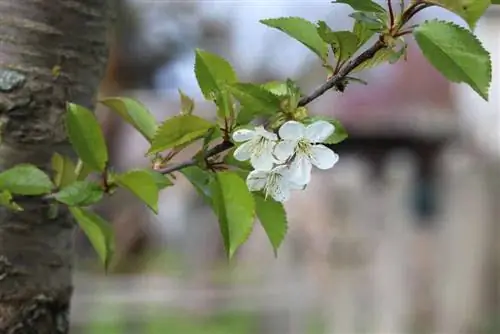
In 1886, this variety was discovered as a chance seedling in Werder. For a long time it was considered one of the most important cherry varieties in commercial cultivation. Over time it was replaced by the large-fruited 'Burlat'. But this heart cherry impresses with a full-bodied aroma, high burst resistance and regular fruit ripening. However, the variety requires a pollination partner because it is self-sterile. Other old varieties such as 'Büttner's Red Cartilage Cherry', 'Big Princess' or 'Dönissen's Yellow Cartilage Cherry' can be considered as pollen suppliers. This type of cherry has several advantages:
- very early maturity and high yields
- extremely he althy tree with strong growth
- very aromatic and firm heart cherries
Europe
Many vegetables and fruits have their origins in southern countries. Varieties that were replaced by new varieties used to be grown all over Europe. Old European varieties are not only characterized by diversity in terms of taste, shapes and colors, but also have different harvest periods.
Beetroot (Beta vulgaris subsp. vulgaris, Conditiva group)
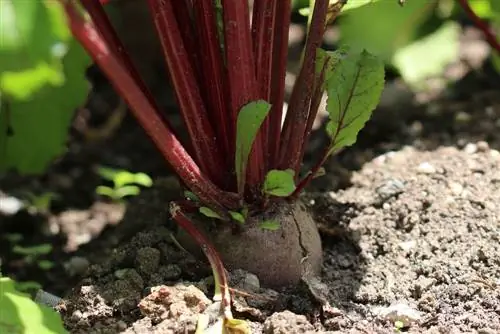
Today you can buy predominantly red varieties whose root tubers are round. Forms with ringed coloring or light-colored varieties have almost been forgotten. The vitamin-rich beets not only enrich the dinner plate in terms of color, but also open up new taste experiences. Cultivation is comparatively easy and the harvest takes place over several weeks. These old varieties are particularly attractive:
- Platform Beetroot: 'Egyptian Flatround'
- White beets: 'Avalanche'
- Steel-shaped beets: 'Crapaudine' (French variety)
- Red and white beets: 'Tonda di Chioggia' (historic vegetables from Italy)
- Yellow beets: 'Burpees Golden' and 'Boldor' (British speci alties)
Orchid salad - Radicchio ‘Variegata di Castelfranco’
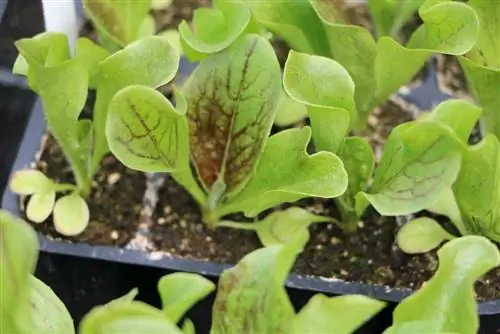
This chicory salad comes from a variety of chicory, whose scientific name is Cichorium intybus var. foliosum. The variety is more reminiscent of lettuce than radicchio because it develops comparatively open heads with strong leaves that are light green to white and speckled with red. Its graceful shape gave this traditional type of salad from Italy the name orchid salad. The variety comes from the municipality of Castelfranco Veneto in northeastern Italy and is considered a real delicacy there, not only among people, because of its aromas and ingredients:
- sweet, mild aroma
- no bitter substances
- rich in vitamins
- Gourmet salad also for turtles
The orchid salad is easy to grow and grow from seeds. The heads are ready to harvest after just ten to twelve weeks.
Striped eggplant 'Rotonda bianca sfumata di rosa'
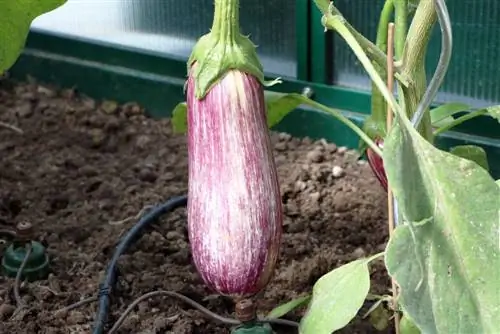
As a historic vegetable, this old eggplant variety impresses both in terms of taste and aesthetics. It comes from Italy and was bred from the eggplant (Solanum melongena). It is characterized by rounded fruits that, as the variety name suggests, appear white and round with a pink gradient. The pulp has only a few seeds and is particularly firm. This variety grows lushly and is extremely productive. Because of its adaptation to Mediterranean conditions, the striped eggplant prefers sunny, warm and sheltered locations. It should therefore be grown in a greenhouse, under a polytunnel or in a pot. Their inner values convince discerning taste critics:
- mild aromatic taste
- creamy consistency
- sliced for breading or marinating
- good for filling
Carrots (Daucus carota)
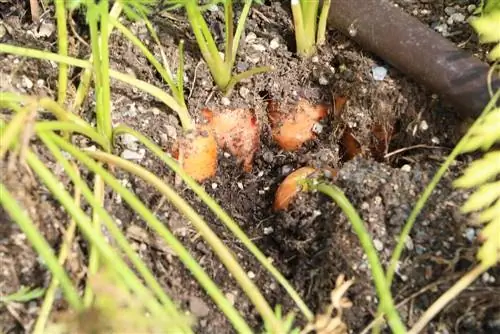
Today the market is dominated by classic orange carrots. But there are also many interesting varieties that differ in shape, colors and taste. They are round, elongated or oval in shape, have purple, white to yellow colors and develop less sweet, savory or delicately aromatic and strong flavors. It's not just the colors that are unusual. The ingredients also differ greatly from the new varieties. Historical vegetables with a purple color are rich in anthocyanins, which naturally protect the body from oxidants.
- White carrot 'Blanche a Collet Vert': less sweet and very aromatic, good storage life
- Early carrot 'Paris Market': ripens quickly, crunchy and very sweet
- Purple carrot 'Black Spanish': strong taste
- Oxheart carrot ‘Oxheart’: juicy-sweet taste, good storage life
- Yellow carrot 'Jaune Du Doubs': less sweet, long cultivation time
Golddrop fig 'Goutte d`or'
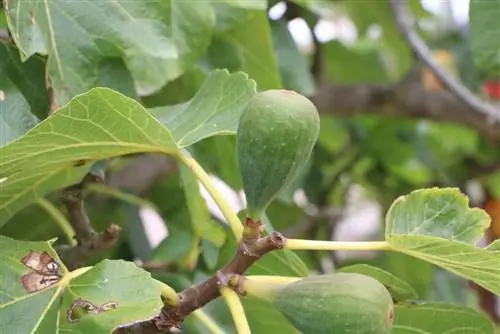
This old variety was first mentioned in the 17th century. It is still widespread in southern France, while the variety tends to be forgotten in Central Europe. The fruits are slightly brownish and are produced twice a year under favorable conditions. The plant does not cope well with damp autumn weather, so planting it in a greenhouse is recommended. The traditional variety is characterized by good winter hardiness and has an excellent taste. Dry summer months promote fruit ripening and ensure a rich harvest. Under these conditions the unique taste can fully develop:
- balanced ratio of sugar and acid
- full-bodied
- very cute
Russia
These rather unusual varieties are hardly known in Central Europe and have a tradition that goes back far into the past. Because of their robust properties and high tolerance to cold, old varieties from distant Asia are very popular among enthusiasts.
Russian brown net cucumber 'Brown Russian'
The origins of this traditional variety are believed to be on the southern slopes of the Himalayas and come from the cucumber (Cucumis sativus). The particularly vigorous variety proves to be robust and thrives magnificently outdoors. The fruits are up to 30 centimeters long and are yellowish in color with a striking network structure. Their taste surpasses the aroma of conventional garden cucumbers. It is crispy, fresh and slightly sweet. The net cucumber can be used in different stages of development:
- young as pickling cucumbers
- for fresh consumption during advanced ripening
- ripened as mustard pickles or braised
Tomato ‘Black Crimea’
This old variety from Russia impresses with its incomparable taste. Their homeland is on the Crimean peninsula. One fruit can develop between 200 and 400 grams of pulp. This makes the fruits among the largest tomatoes ever. The 'Black Crimea' is extremely robust and productive, although direct rain should be avoided. To ensure that the tomatoes remain nice and crunchy, they are harvested early with a green-brown color. When fully ripe, the fruits are characterized by various characteristics:
- flat-round to asymmetrical shape
- green collar, and brown-red flesh
- distinctive aroma, very juicy
Plum ‘Russian Plum’
Forgotten fruits like this plum are particularly suitable for lovers. It comes from the harsh regions of Siberia, although the exact age of this variety is unknown. The 'Russian plum' is characterized by its high robustness to changeable weather conditions. It produces good yields even under adverse conditions and is therefore highly valued not only in its homeland. The fruits are reddish to purple in color and have a fine coating on the peel. They are rounded and medium to large in size. The medium-firm flesh is white-yellow and occasionally takes on the reddish color of the peel. The plums taste particularly good fresh from the tree. They are characterized by a pleasant plum aroma and are extremely juicy. Even before the fruit ripens, the variety is a highlight because the flowers are particularly lush.


